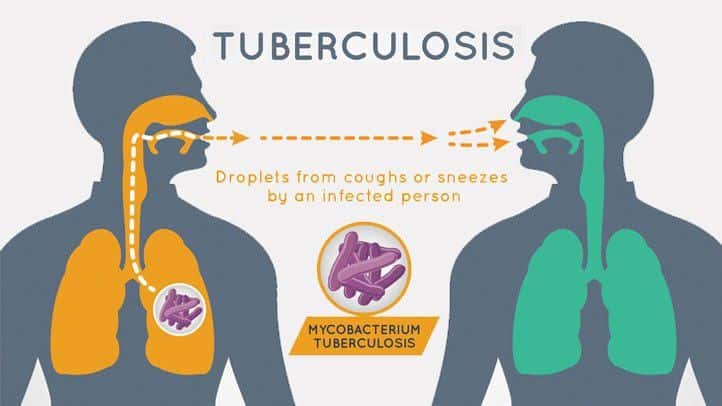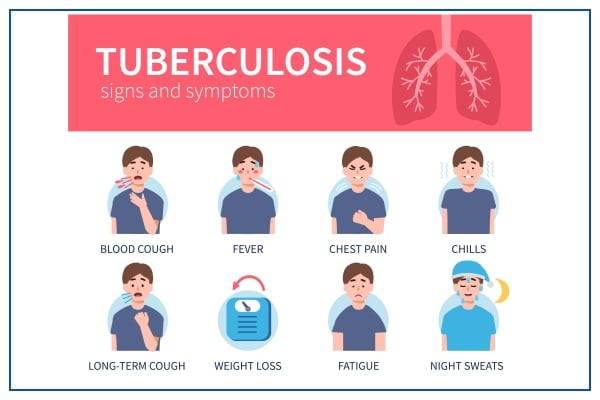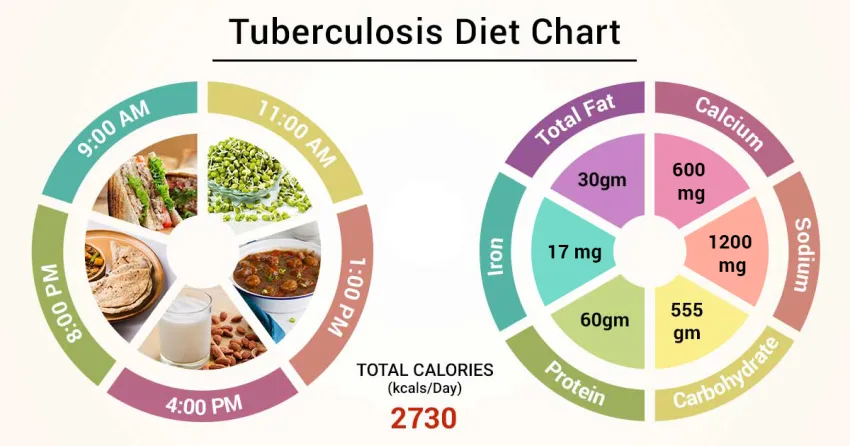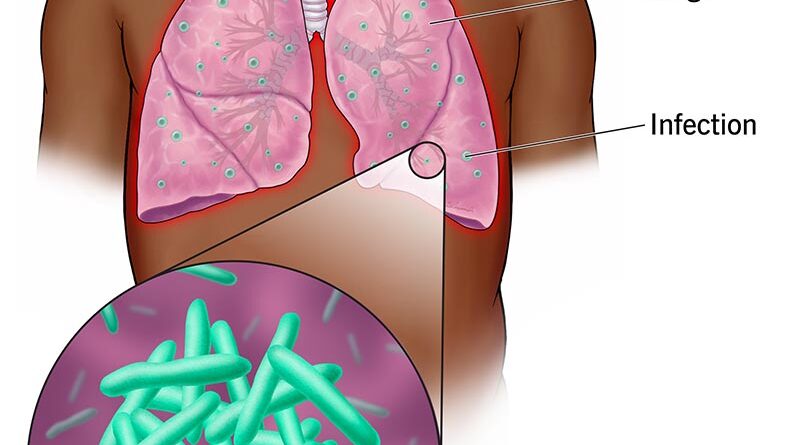Tuberculosis – Symptoms, Causes and Treatment
Tuberculosis is one of the most dreaded diseases. Over five lakh people die of this disease every year in India. Tuberculosis is caused by a tiny germ called tubercle bacillus which is so small that it can be detected only by a microscope. The germs enters into the body through the nose, mouth and windpipe and settles down in the lungs. It multiples by millions and produces small raised spots called tubercles.

Tuberculosis is not hereditary but an infectious or communicable disease. Those suffering from the disease for a considerable time eject living germs while coughing or spitting and when these enter the nose or mouth of healthy persons, they contract the disease. Mouth-breathing and kissing as well as contaminated food and water are also responsible for spreading tuberculosis.
Symptoms
Tuberculosis is of four types, namely of lungs, intestines, bones and glands. Pulmonary tuberculosis of the lungs is by far the most common type. It tends to consume the body and the patient loses strength, colour and weight. Other symptoms are a raise in temperature especially in the evening, a persistent cough and hoarseness, difficulty in breathing, pain in the shoulders, indigestion, chest pain and blood in the sputum.

Causes
Lowered resistance or devitalisation of the system is the chief cause of this disease. This condition is brought about mainly by mineral starvation of the tissues of the body due to an inadequate diet; and the chief mineral concerned is calcium. In many ways, therefore, tuberculosis is the disease of calcium deficiency. There can be no breakdown of the tissue and no tubercular growth where there is adequate supply of organic calcium in the said tissue. Thus an adequate supply of organic calcium in the system together with organic mineral matter is a sure preventive of the development of tuberculosis.
Lower resistance also results from a variety of other factors such as suppression of the disease by drugs and medication, use of stale, devitaminised and acid forming foods, eating wrong combination of foods, such as taking fruits with starchy foods at one meal, causing fermentation in the stomach; wasting of energy through excessive loss of semen and living in ill-ventilated houses. Other causes include exposure to cold, loss of sleep, impure air, a sedentary life, overwork, contaminated milk, use of tobacco in any form, liquor of all kinds, tea, coffee and all harmful drinks. The factor prepare the ground for the growth of germs of various kinds, including tubercle bacillus. These germs may be present in the body but are quire harmless for those who are full of vitality and natural resistance.

Treatment
Tuberculosis is no longer considered incurable if it is tackled in the early stages. An all round scheme of dietetic and vitality building programme along natural lines is the only method to overcome the disease. As a first step, the patient should be put on an exclusive fresh fruit diet for three or four days. He should have three meals a day of fresh, juicy fruits, such as apples, grapes, pears, peaches, oranges, pineapple, melon or any other juicy fruit in season. Banana, dried or tinned fruits should not be taken. For drinks, unsweetened lemon water or plain water either hot or cold may be taken. If losing much weight on the all-fruit diet, those already under weight may add a glass of milk to each fruit meal.
After the all-fruit diet, the patient should adopt a fruit and milk diet. For this diet, the meals are exactly the same as the all fruit diet, but with milk added to each fruit meal. The patient may begin with a litre of milk the first day and increase by quarter litre daily upto two to two and a half litres according to how the milk agrees. The milk should be fresh and unboiled, but may be slightly warmed if desired. It should be sipped very slowly. The fruit and milk diet should be continued for four to six weeks. Thereafter, the following dietary may be adopted :
Breakfast : Fresh fruits, as obtainable, and milk. Prunes or other dried fruits may also be taken, as desired.
Lunch : Steamed vegetables as available, one or two whole wheat chappatis and a glass of buttermilk.
Dinner : A bowl of raw salad of suitable vegetables with wholewheat bread and butter. Stewed fruit or cooked apple may be taken for dessert.
At bed time : A glass of milk

The chief therapeutic agent needed for the treatment of tuberculosis is calcium. Milk, being the richest food source for the supply of organic calcium to the body, should be taken liberally. In the dietary outlines above at least one litre of milk should be taken daily.
The patient should avoid all devitalised foods such as white bread, white sugar, refined cereals, puddings and pies, tinned, canned and preserved foods. He should also avoid strong tea, coffee, condiments, pickles, sauces etc.
The custard apple is regarded as an effective food remedy for tuberculosis. It is said to contain the qualities of rejuvenating drugs. Indian gooseberry has also been proved an effective remedy for tuberculosis. A tablespoonful each of fresh amla juice and honey mixed together should be taken every morning in this condition. Its regular use will promote vigour and vitality in the body within a few days. Regular use of radish is also beneficial.
The patient should take complete rest of both mind and body. Any type of stress will prevent healing. Fresh air is always important in curing the disease and the patient should spend most of the time in the open air and should sleep in a well-ventilated room. Sunshine is also essential as tuber bacilli are rapidly killed by exposure to sun rays. Other beneficial steps towards curing the disease are avoidance of strain, slow massage, deep breathing and light occupation to ensure mental diversion.




